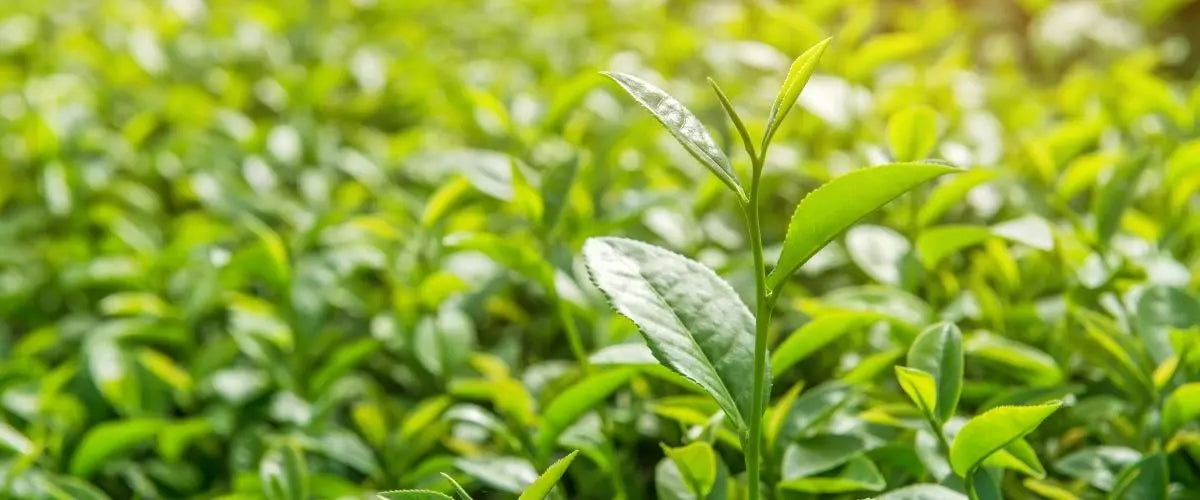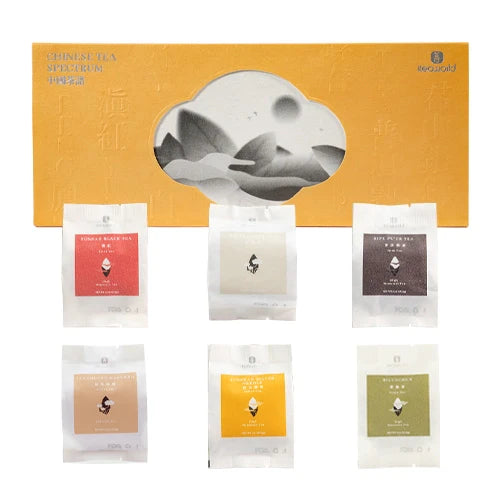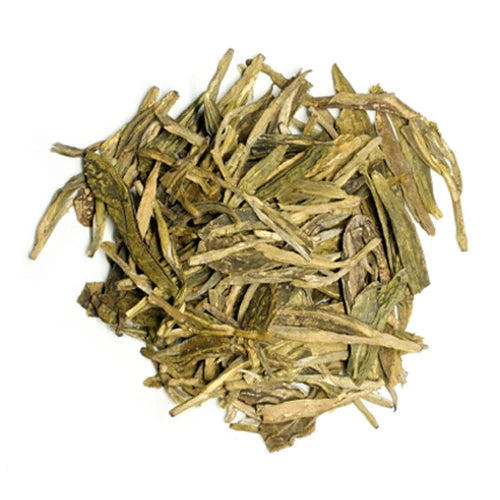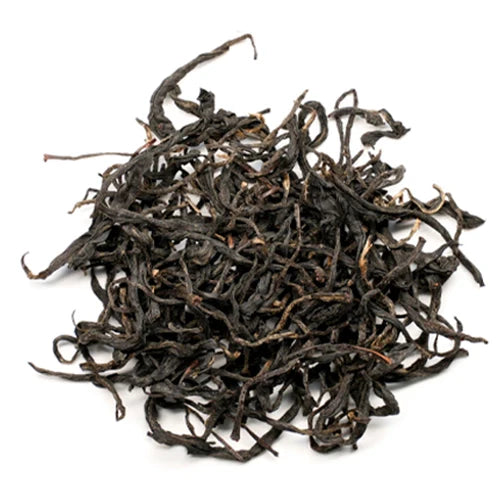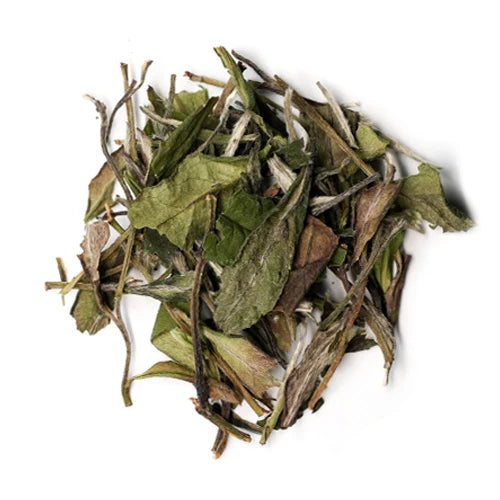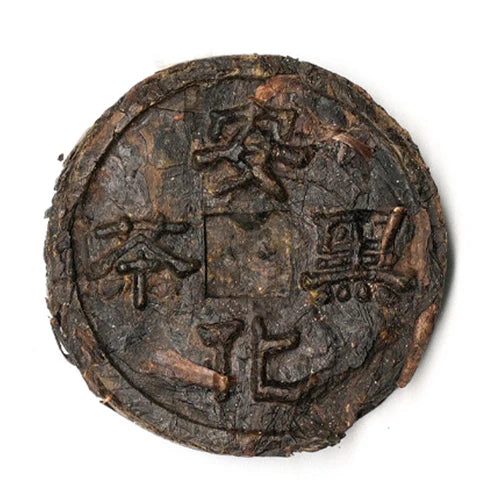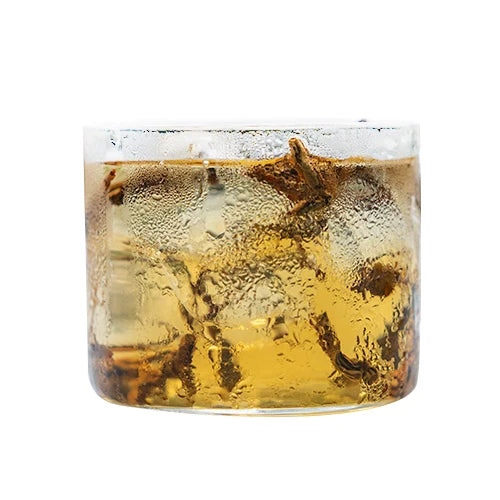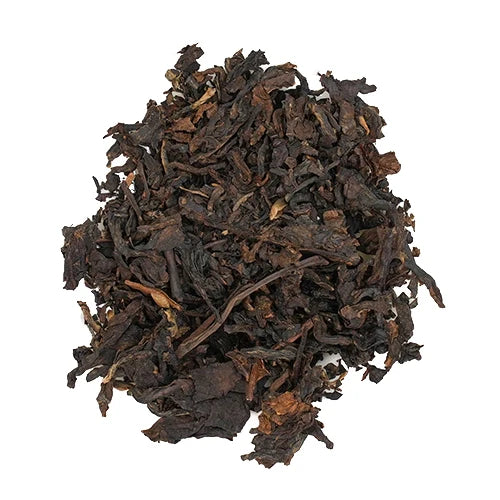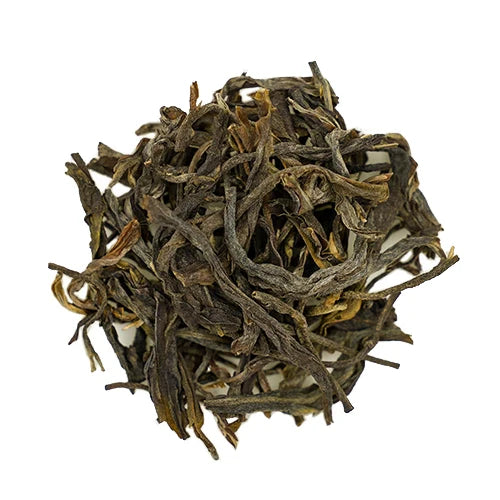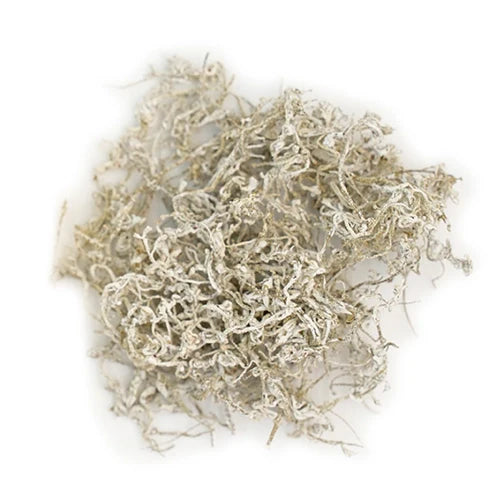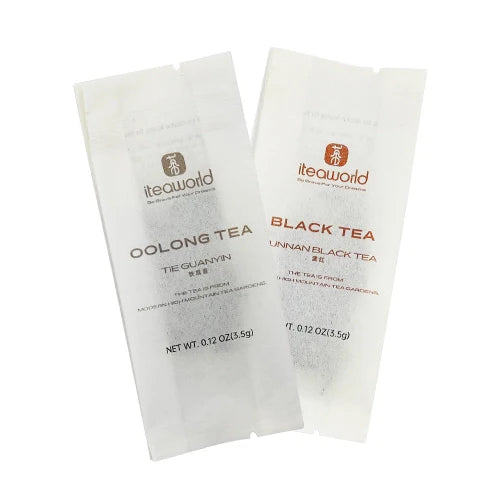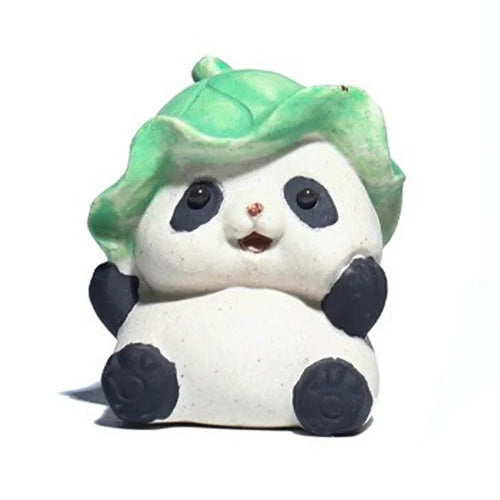Guide

6 Delicious Chinese Wild Tea Recipes to Enjoy
Chinese wild tea refers to tea made from the fresh leaves of tea trees growing in the wild. Compared to tea trees cultivated in plantations, these wild tea trees grow without human management and propagate through seeds. Additionally, these wild tea trees often thrive in remote areas with excellent natural environments.
People may have heard of famous Chinese tea like Longjing and Lapsang Souchong, but wild tea names are less known. Compared to these well-known Chinese tea, Chinese wild tea is relatively niche. However, due to its unique aroma and flavor characteristics, wild tea has also won the favor of many tea enthusiasts.
Whether it's wild black tea, wild green tea, or other varieties of wild tea, they all possess a strong fragrance and a distinct, rich tea flavor. Therefore, wild tea is delicious when tasted on its own and is also suitable for making a variety of tasty beverages. Loose leaf tea gift boxes containing wild tea are excellent choices as healthy and delicious tea gift sets for family and friends.
Lemon Wild Black Tea
The freshness of lemon and the floral and fruity aroma of black tea compose a wonderful symphony—fragrant, rich, and sweet.
· Preparation Method:
Place wild black tea into a cup and add an appropriate amount of hot water to brew.
Add fresh lemon slices and let them steep for a moment.
You may add some honey to taste. The sweetness of honey can balance the bitterness of wild black tea, making the tea more pleasantly sweet.
The fresh citrus aroma of lemon combined with the rich taste of wild black tea offers a unique flavor experience. The vitamin C in lemon also helps boost the immune system.
Find more loose leaf black tea with our Black Tea Sampler.>>>
Wild Black Tea Milk Tea
What's the secret to making delicious milk tea? A rich and smooth tea infusion. Try making milk tea with wild black tea, and you won't be disappointed!
· Preparation Method:
1. Brew wild black tea with hot water, then remove the tea leaves to obtain the tea infusion.
Add an appropriate amount of milk and sugar to the tea infusion (adjust according to personal taste). Stir well, and it's ready to drink.
Milk tea made with wild black tea combines the aroma of tea with the smoothness of milk, perfect for tea lovers who enjoy the texture of milk tea.
Wild Green Tea Juice
This beverage offers a fresh and refreshing sensation, making it perfect for summer.
· Preparation Method:
Brew wild green tea with water at 85-90°C (185-194°F), then remove the tea leaves to obtain the tea infusion.
Juice your favorite fruits (such as oranges or apples), or use store-bought fruit juice.
Thoroughly mix the green tea with the fruit juice to create a healthy drink.
This blended beverage not only tastes great but also contains rich antioxidants and vitamins.
Find more loose leaf green tea with our Green Tea Sampler.>>>
Wild Oolong Tea Slushie
You may have tried many fruit-flavored slushies, but a slushie made with wild oolong tea will give you a new experience—refreshing, palate-cleansing, and memorable.
· Preparation Method:
1. Brew wild oolong tea with hot water, then remove the tea leaves to obtain the tea infusion. Let the tea cool down for a while.
2. Put the tea infusion, ice cubes, and a small amount of sugar or honey into a blender and blend until smooth to make the oolong tea slushie.
This beverage has a delicate texture and is perfect as a refreshing summer treat. If you use some of the best oolong tea, such as Da Hong Pao, Tie Guanyin, or Fenghuang Dancong, to make this drink, it will have an even more distinctive flavor.
Find more loose leaf oolong tea with our Oolong Tea Sampler.>>>
Wild Dark Tea Butter Milk Tea
This is a rich, smooth beverage that also aids digestion.
· Preparation Method:
Add wild dark tea to an appropriate amount of water in a pot and boil to extract the tea infusion.
Add a suitable amount of milk, butter, and sugar to the tea infusion. Stir well and simmer on low heat for a while.
Pour out the tea infusion and strain out the tea leaves. Your wild dark tea butter milk tea is ready to enjoy.
Find more loose leaf dark tea with our Dark Tea Sampler.>>>
Herbal Wild White Tea
If you want a tea with rich aromatic layers and a fresh, sweet taste, you should try herbal wild white tea!
· Preparation Method:
Mix wild white tea with other herbs and flowers such as rose and chrysanthemum.
Add water at about 90°C (194°F) to the mixed tea and brew, then remove the tea leaves.
If you prefer a sweeter drink, add a small amount of sugar or honey.
The addition of herbs and flowers not only enhances the flavor of wild white tea but also provides additional health benefits.
Beverages made with wild tea are not only delicious but also a healthier choice. Wild tea is considered one of the best loose leaf tea in China. Because wild tea trees grow without human management, the likelihood of pesticide and fertilizer contamination is lower compared to plantation teas. If you are looking for delicious and healthy organic loose leaf tea from China, you can explore the range of Chinese wild teas.
When purchasing, be sure to check for organic testing and certification by professional organizations. This will ensure that you are buying qualified organic loose leaf tea.
We hope this article has provided you with new ideas for making beverages with wild tea. Besides using wild tea as an ingredient, other high-quality teas with strong flavors and rich aromas can also be used to create these delicious beverages.
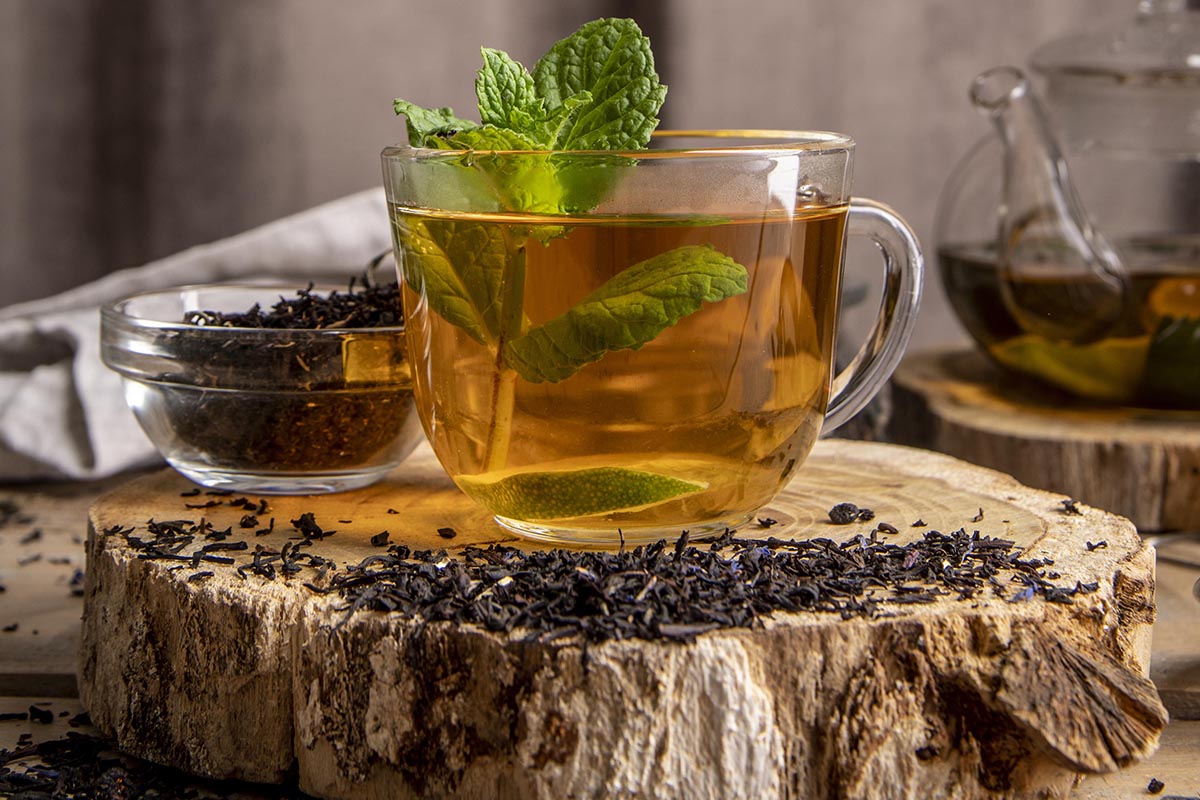
Is Chinese Wild Tea Black, Green, or Oolong Tea?
What determines whether a tea is black tea, green tea, or oolong tea?
It is the processing method that determines whether a tea is black tea, green tea, or oolong tea.
Theoretically, fresh leaves from a tea plant can be made into any of the six major types of Chinese tea (green tea, white tea, yellow tea, oolong tea, black tea, and dark tea).
For example, if you stir-fry freshly picked tea leaves in a pan until they wilt and soften, then manually roll the leaves into a certain shape, and finally dry them, you will get loose leaf green tea.
If, during the above process, after rolling the tea leaves, you do not directly dry them but instead pile them in a warm, humid room to ferment for a period of time (several hours or even longer), and finally dry the fermented tea leaves, you will get loose leaf dark tea.
Find more Chinese tea with our Chinese Tea Sampler.>>>
So, what is wild tea?
When we discuss wild tea, we are no longer focusing on the processing method of loose leaf tea but rather on the raw material—the fresh leaves.
From the perspective of cultivation methods, tea trees can be divided into several types: tea trees in tea gardens, wild tea trees, and ancient tea trees (usually over a hundred years old), among others. Some teas are considered among the best loose leaf tea precisely because their raw materials are of excellent quality, such as ancient tree Pu-erh tea from Yunnan.
Wild tea refers to tea made from fresh leaves of wild tea trees. Wild tea trees are those that grow in the wild without human management. These trees are generally sexually reproduced varieties that grow in remote and environmentally superior areas.
Because they are not managed by humans, wild tea is much less likely to contain pesticides and fertilizers compared to other types of tea. If you are looking for organic loose leaf tea among Chinese teas, you might consider wild tea. Before purchasing, be sure to check for testing and certification from professional organizations to ensure you are buying qualified organic loose leaf tea.
Then, what type of tea is wild tea exactly? Black, green or others?
Depending on your needs, you can process fresh wild tea leaves into any of the six major types of tea. If you prefer oolong tea, you can choose to make the fresh wild tea leaves into wild loose leaf oolong tea. This is why tea enthusiasts encounter varieties like wild black tea, wild green tea, and wild oolong tea when selecting Chinese tea.
We have had the opportunity to explore and learn about various types of wild tea. From what we have learned, different types of wild tea have their unique characteristics. Here are some examples:
Wild black tea: The aroma of dry wild black tea is evident even before brewing. After brewing, the tea liquor is bright orange-red with a pronounced aroma that is not superficial. The taste is rich, sweet, and refreshing, with a notable mouth-watering effect.
Wild green tea: Even after multiple brews, wild green tea maintains its fresh and pleasant aroma, which is one of the advantages of Chinese green tea. The taste of wild green tea is rich and sweet. It may be slightly bitter at first, but it quickly turns sweet.
Some tea enthusiasts wonder if wild tea can be made using the specific processing method, such as Da Hong Pao processing method. The answer is yes, but in practice, such examples are rare.
The world of Chinese tea is very diverse, with many possibilities. If you want to try different types of Chinese tea, it is recommended to start with a loose leaf tea sampler, which is more economical and convenient.
What are the health benefits of wild tea?
The health benefits of Chinese tea are directly related to the processing methods, with less association with the type of fresh leaves. For example, both wild black tea and tea garden black tea have good effects on promoting digestion.
Here are the health benefits of different types of wild tea. Different types of wild teas can be suitable tea gift sets for family and friends.
· Wild Green Tea:
Wild green tea contains a large amount of tea polyphenols, especially catechins (EGCG), which have strong antioxidant properties. These help prevent cell damage and slow down the aging process. Additionally, they help reduce the risk of cardiovascular diseases and assist in weight loss.
Find more loose leaf green tea with our Green Tea Sampler.>>>
· Wild White Tea:
Wild white tea is rich in tea polyphenols and amino acids, which have significant antioxidant effects and help enhance immunity.
· Wild Yellow Tea:
Wild yellow tea has a high content of tea polyphenols, and the production process generates a large number of digestive enzymes. Therefore, yellow tea has good antioxidant properties, enhances immunity, and improves digestion.
· Wild Oolong Tea:
As a semi-oxidized tea, wild oolong tea contains unique tea polyphenols and theaflavins, which have excellent antioxidant properties. These help combat free radicals, slow down cellular aging, and positively impact cardiovascular health. Wild oolong tea also aids in improving digestion, enhancing beauty, and helping control weight. Some of the best oolong tea is renowned for their aroma and have a soothing effect on mood.
Find more loose leaf oolong tea with our Oolong Tea Sampler.>>>
· Wild Black Tea:
Wild black tea is rich in tea polyphenols and theaflavins, which have antioxidant properties that help delay aging and maintain cardiovascular health. Wild black tea also helps improve indigestion and spleen and stomach weakness.
Find more loose leaf black tea with our Black Tea Sampler.>>>
· Wild Dark Tea:
Wild dark tea has antioxidant and metabolism-regulating effects. Because of the post-fermentation process of wild dark tea, it is especially suitable for those looking to improve gut health and control weight.

The Difference Between Black Tea and Dark Tea
What is black tea?
Black tea is one of the six major types of Chinese tea, and it is highly popular worldwide.
Black tea is known for its high oxidation level (70%~90%) and warm red-colored tea soup. It has a rich and delicate taste, often with a hint of sweetness.
The earliest black teas can be traced back to the Song Dynasty (960-1279 AD) in China. Today, there are many Chinese black tea varieties, such as Lapsang Souchong, Yunnan black tea and Jin Jun Mei. Additionally, there are other varieties worldwide, including Assam Black Tea, Darjeeling Black Tea, and Earl Grey.
As Black Friday approaches, tea lovers can take this chance to restock their favorite teas or explore new ones. iTeaworld — Premium Chinese Loose Leaf Tea Celebration is now live: 25% Off All Teas (including oolong, jasmine, black, dark, aged, white, and herbal teas), 50% Off Green Teas, plus exclusive free gifts, from Nov 3 to Dec 1.
What is dark tea?
Dark tea is also one of the six major types of Chinese tea. While it may not be as well-known as black tea, many experienced tea enthusiasts believe that the deliciousness and influence of dark tea are no less than that of black tea.
The distinctive feature of dark tea comes from its unique post-fermentation process. Post-fermentation refers to the process of piling tea leaves that have undergone withering and rolling, along with appropriate temperature and humidity, allowing the tea leaves to ferment under the action of microorganisms.
There are several varieties of dark tea, including the well-known Ripe Pu-erh, as well as lesser-known varieties such as Liu Bao Tea and Anhua Dark Tea.
I'm curious, why do black tea and dark tea have such similar names?
"Black" and "dark" sound like they mean the same thing. Why did people choose such confusing names for black tea and dark tea?
One theory suggests that historically, the first black tea Westerners encountered was China's Lapsang Souchong. When people saw the dark color of Lapsang Souchong's dry leaves, they began calling this loose leaf tea “black tea." If translated according to the Chinese name “红茶 (hóngchá)", the appropriate English name would be “red tea." However, the English name "black tea" persisted over time, and there was no intention to change it.
Dark tea reached Europe and other regions later than black tea. When people considered translating dark tea according to its Chinese name “黑茶 (hēichá)," they found that the word "black" which accurately conveys the meaning “黑(hēi)" was already in use. What to do? Fortunately, there was also the word “dark." And that's how the English name for dark tea was settled upon.
The Difference in Taste and Aroma Between Black Tea and Dark Tea
Black tea generally has a mellow and smooth taste, with a noticeable sweetness. Its aroma often includes fruity and floral notes, leaning towards a fresh and fragrant profile. Some unique black teas, like Lapsang Souchong, also feature a distinct smoky aroma. It's recommended to explore the aromas of different black teas using a loose leaf tea sampler.
Due to its post-fermentation process, dark tea has a denser taste compared to black tea. Its aroma typically includes notes of wood, agilawood, jujube, and sometimes a fungal earthiness, creating a deeper and more intense profile. Tea beginners may find the taste of dark tea challenging at first. However, those who have developed a taste for tea may find themselves irresistibly drawn to dark tea.
For those who enjoy a mellow tea taste, besides black tea and dark tea, oolong tea is also worth trying. Many highly regarded best oolong tea, such as Oriental Beauty and Da Hong Pao, offer a mellow taste while showcasing the characteristic high fragrance of loose leaf oolong tea.
The Difference in Production Regions Between Black Tea and Dark Tea
Black tea is widely produced in several countries, including China, Sri Lanka, India, Indonesia, and Thailand.
Dark tea is primarily produced in China. Among them, Yunnan Province in China is a major producer of ripe Pu-erh tea. In addition to Yunnan, there are locally famous dark tea production areas in Hunan, Hubei, Guangxi, and other regions of China. It can be fascinating to explore dark teas from different regions using a tea sampler to compare their characteristics.
Black Tea Recommendations
1. Lapsang Souchong
Lapsang Souchong is the earliest black tea in the world, originating from Wuyi Mountain in Fujian Province, China.
The traditional version of Lapsang Souchong has a reddish-brown dry leaf appearance, a deep red liquor color, a mellow and lingering taste, and a unique smoky flavor. Because of this smoky flavor, Lapsang Souchong is highly acclaimed and considered one of the best loose leaf tea. The smoky flavor comes from the traditional Lapsang Souchong's unique pine wood smoking process.
Today, due to restrictions on pine wood harvesting in the Wuyi Mountain region, the production of traditional Lapsang Souchong is gradually decreasing, being replaced by modern version of Lapsang Souchong without the smoky flavor.
2. Yunnan Black Tea (Dian Hong)
Yunnan Black Tea primarily originates from Yunnan Province, China. It is characterized by using fresh leaves from Yunnan's large-leaf tea trees. Despite its history of less than a hundred years, Yunnan Black Tea has gained immense popularity among tea enthusiasts for its deliciousness and is now very well-known.
The dry leaves of Dian Hong are reddish-brown with golden tips. The tea soup of Yunnan Black Tea is bright red, with a rich taste and noticeable sweetness, often accompanied by notes of sweetness, honey, and sweet potato aroma.
Find more loose leaf black tea with our Black Tea Sampler.>>>
iTeaworld — Premium Chinese Loose Leaf Tea Celebration: Sip Authentic China, Save Big this Black Friday!25% Off All Teas, 50% Off Green Teas, and Exclusive Free Gifts from Nov 3 to Dec 1.Bring home authentic Chinese tea and share the warmth this holiday season.
Dark Tea Recommendations
1. Ripe Pu-erh
Ripe Pu-erh tea is mainly produced in Yunnan Province, China. It is made from large-leaf tea trees in Yunnan, and then undergoes a process of wet piling and complex fermentation to develop its unique flavor profile.
Ripe Pu-erh has a mellow, rich, and smooth taste, with a noticeable sweetness and a distinctive aged flavor. It typically carries aromas such as honey, aged notes, woody tones, and fruity notes.
2. Liu Bao Tea
Liu Bao Tea is primarily produced in Wuzhou City, Guangxi Province, China. One of the main reasons for the popularity of Liu Bao Tea is that people in humid and hot regions noticed that miners who regularly drank Liu Bao Tea were less prone to illnesses. As a result, Liu Bao Tea's benefits for regulating digestion, dispelling dampness, and relieving diarrhea became well-known among many.
Liu Bao Tea is renowned for its characteristics of being "red, strong, aged, and mellow." It has a deep red liquor color, a thick and aged aroma, and a sweet and mellow taste. High-quality Liu Bao Tea carries aromas of pine smoke and betel nut. Tea gift sets containing Liu Bao Tea are excellent choices as healthy and delicious gifts for family and friends.
Find more loose leaf dark tea with our Dark Tea Sampler.>>>
In general, apart from their similar names, black tea and red tea are quite different in many aspects, making them two distinctly characteristic types of tea.
In addition to black tea and dark tea, there are many other types of tea in Chinese tea culture worth trying, such as green tea, white tea, and oolong tea. Furthermore, exploring Chinese wild tea is also worthwhile; some wild tea that has undergone organic certification is healthy and delicious organic loose leaf tea, suitable for tea enthusiasts seeking healthier options.
I hope this article helps you gain a better understanding of Chinese tea and know how to choose your favorite teas.
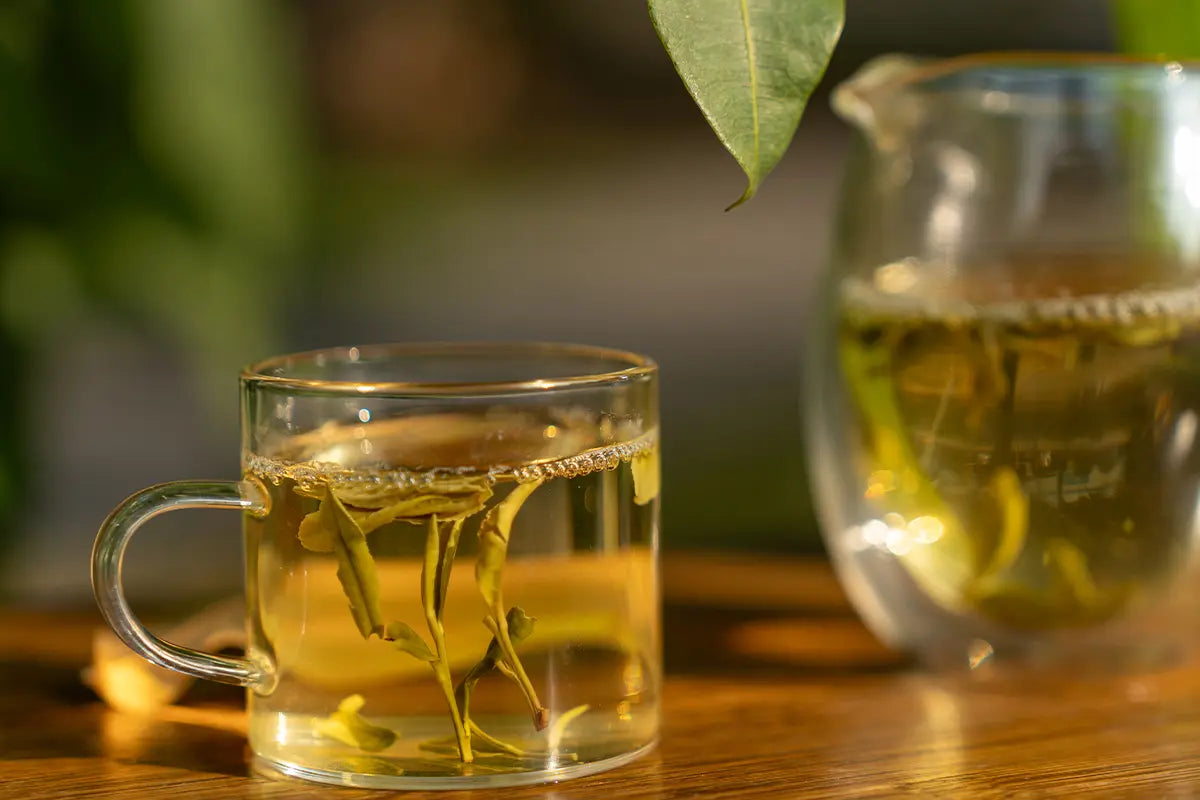
Elevate Your Spring Experience: Choosing the Perfect Chinese Tea For You
What Kind of Tea Is Suitable for Drinking in Spring?
As spring arrives, the weather gradually warms up and everything starts to come to life. What kind of tea is more suitable for this gradually brightening season?
In general, there are two features of Chinese loose leaf tea that are suitable for drinking in spring: aroma, or freshness.
Why Are These Types of Tea Suitable for Spring?
Awakening the Body
Spring is a season of awakening. Before this, we have experienced a long winter: the weather is cold, and much like other creatures in nature, our bodies have been in a state of dormancy. As spring arrives, following the rhythm of growth in nature, our bodies also gradually awaken.
Aroma has the ability to delicately awaken our brains and bodies. Therefore, the preferred Chinese teas for spring are flower teas with charming aroma, and oolong teas with high aroma. Let's select some aromatic tea gift sets!
At the same time, drinking Chinese tea with fresh characteristics, such as green tea, can also help our bodies transition from the winter mode and adapt internally to the rhythm of spring.
Beneficial for the Liver
From the perspective of traditional Chinese medicine, spring is an important season for the liver.
The liver is closely related to our emotions. Flower teas and oolong teas, which have aromatic characteristics, can help us soothe our emotions and better nurture the liver.
Loose leaf green tea is helpful for nourishing the liver and eyes (which are closely related to the liver), making it also suitable for consumption during spring.
Flower Tea - A Splash of Spring
Spring is the season of blooming flowers, and a cup of Chinese flower tea can help us better connect with spring, both physically and mentally.
When you think of flower tea, perhaps the image of flowers floating in the cup comes to mind. In reality, the characteristic of high-quality Chinese flower tea is to smell the flowers but not see them.
This is determined by the exquisite production process of Chinese flower tea. The core of it is the scenting process: using green tea, black tea, and other dried teas to absorb the aroma of fresh flowers, and then sieving out the flowers once their aroma has dissipated.
Aroma of Flower Tea:
Depending on the fresh flowers used in production process, Chinese flower teas offer a variety of aromas such as jasmine, rose, and osmanthus.
High-quality production methods often preserve the aroma of the fresh flowers, making you feel as if you are in a moment of flowers blooming.
Taste of Flower Tea:
The taste of flower tea is determined by the dry tea used in its production.
For example, jasmine green tea tastes like green tea, while jasmine black tea and rose black tea taste like black tea. Also, flower tea carries a hint of floral aroma and sweetness on top of the taste of its corresponding green or black tea base.
Flower tea is also delicious when cold brewed. You can explore this pleasure through a cold brew tea sampler.
Flower Tea Recommendations:
Jasmine Green Tea, Rose Black Tea, Osmanthus Black Tea
Find more loose leaf jasmine tea with our Chinese Jasmine Tea Sampler.>>>
Oolong Tea - More Choices for Tea Aroma Lovers
If you find the aroma of flower tea too intense and are looking for other aromatic options, then loose leaf oolong tea is perfect for you.
Unlike the aroma source of flower tea, the aroma of oolong tea mainly comes from its unique production process. Here, we briefly summarize this production process as the alternating shaking and resting of fresh leaves. In reality, the actual production process is much more complex.
Through this unique production process, various substances within the fresh tea leaves undergo rich changes, resulting in a plethora of aromatic compounds.
The aroma of oolong tea is not as direct as that of flower tea, but rather more subtle and uplifting, perfect for savoring.
Aroma of Oolong Tea:
According to incomplete statistics, there are over a hundred different aromas associated with oolong tea. For the diverse aroma profiles, a tea sampler is the most convenient form of exploration
Common aroma profiles of oolong tea include flowery, fruity, honey, charcoal, and fresh aromas, among others.
Taste of Oolong Tea:
In general, the taste of oolong tea falls between that of green tea and black tea.
Some oolong teas lean closer to green tea, with a lighter color and a more delicate flavor. Others lean towards black tea, with a deeper color and a richer taste. You can choose according to your preferences.
Oolong Tea Recommendations:
TieGuanyin, Da Hong Pao, Fenghuang Dancong
Find more loose leaf oolong tea with our Oolong Tea Sampler.>>>
Green Tea - A Fresh Taste for Spring
Among other categories of tea in China, green tea is the most renowned for its freshness. Drinking green tea is a process of experiencing freshness from the inside out.
It's best to drink green tea from a glass cup, allowing you to see the green leaves dancing in the cup, and visually experience the fresh, vibrant green color.
Aroma of Green Tea:
Although the aroma of green tea may not be as prominent as that of flower tea or oolong tea, it also boasts a rich variety of aroma profiles.
Common aromas of green tea include fresh, bean scent, chestnut, flowery and fruity, and honey aromas, among others.
Taste of Green Tea:
Overall, the taste of green tea tends to be refreshing.
Building upon this overall taste profile, the taste of green tea can also be further categorized into various types such as fresh, mellow, and sweet, among others.
Green Tea Recommendations:
Longjing (Dragon Well), Biluochun (Green Snail Spring), Huangshan Maofeng
Find more loose leaf green tea with our Green Tea Sampler.>>>
In simple terms, the key points for drinking tea in spring are: aroma and freshness. Having read this, is there any type of tea that makes you excited to try? You can start by a loose leaf tea sampler.
Chinese tea comes in a wide variety, with subtle changes in taste and aroma. It's through trying many types that you can truly appreciate the richness of the world of tea. Hopefully, delicious tea will allow you to experience more of the beauty of spring.
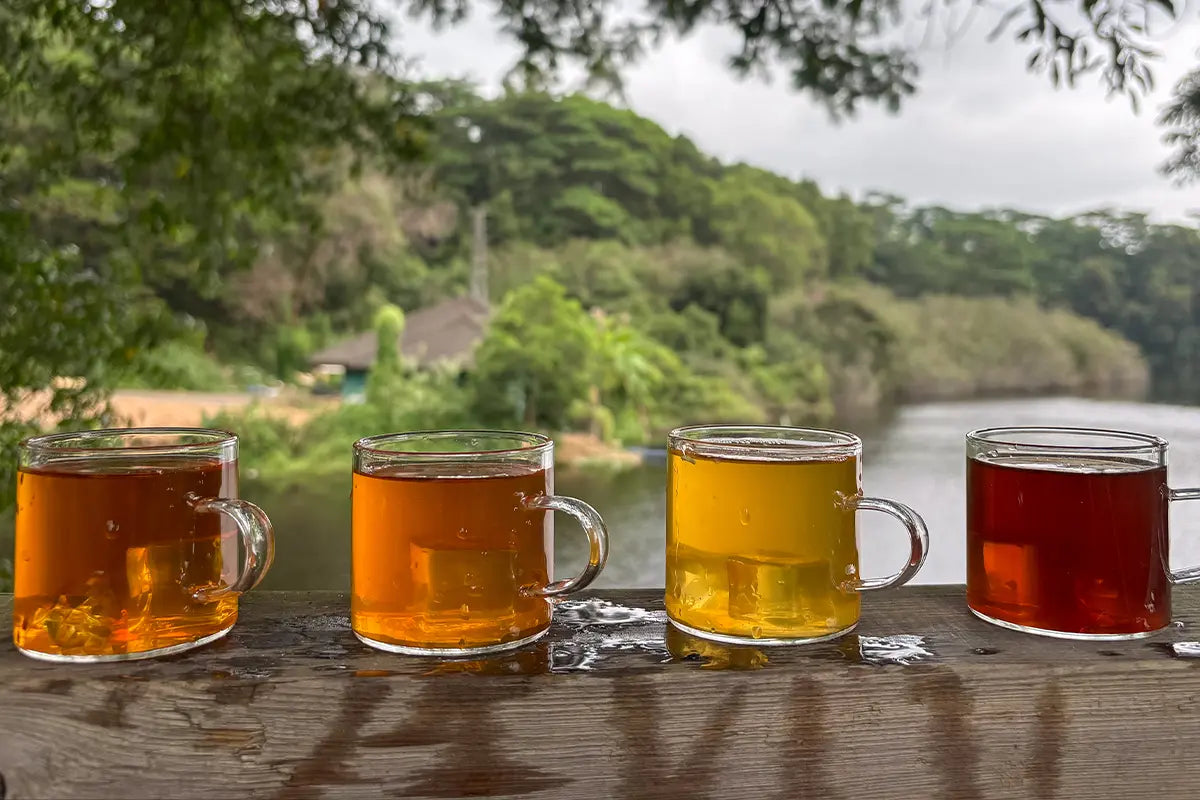
The Best Tea Samplers Under $50
Green Tea Sampler - Fresh and Refreshing
Chinese green tea is unfermented tea, characterized by its clear soup and green leaves.
Loose leaf green tea is of the highest quality in spring, as there are fewer bitter substances and more fresh flavor substances in spring tea, resulting in a refreshing taste with a sweet aftertaste and a fragrant aroma.
iTeaworld's Green Tea Sampler offers a variety of famous loose leaf green teas from China, including Longjing, Biluochun, and Huangshan Maofeng. Allow yourself to fully explore the rich variations in freshness and flavor among different green teas, and experience the refreshing taste and sweet aftertaste characteristic of loose leaf green tea.
Oolong Tea Sampler - Rich Aroma, Long-lasting Flavor
Chinese oolong tea is a semi-fermented tea, characterized by its moderate nature without being too cold, combining the sweet richness of black tea with the fragrance of green tea, offering a strong taste with freshness and a lasting aftertaste.
The notable feature of loose leaf oolong tea is its ever-changing aroma, with the most prominent aspect being its rich and uplifting fragrance, often dominated by a complex floral and fruity aroma. The diverse aroma variations of loose leaf oolong tea surpass those of other types of tea.
iTeaworld's oolong tea sampler carefully selects classic loose leaf oolong teas from different regions, including floral, fruity, honeyed, and clean aromas, allowing you to experience the flavors of best oolong tea. For beginners and enthusiasts alike, iTeaworld's basic version of the Oolong Tea Sampler is highly suitable. For seasoned tea aficionados, iTeaworld's advanced version of the Oolong Tea Sampler is an excellent choice.
Black Tea Sampler - Rich, Bold, and Refreshing
Black tea is fully fermented tea, characterized by its red liquor and leaves.
Black tea resembles a ripe fruit, warm and sweet. It offers a strong, bold, and refreshing taste with a bright red color, indicative of its high concentration of soluble substances and excellent quality. The aroma of black tea is primarily floral with sweetness, followed by a complex blend of fruity and honeyed aromas.
id you know that the earliest black tea originated in China? iTeaworld's Black Tea Sampler takes you on a journey to explore the flavors of both the oldest and youngest black teas from China. Whether you prefer smoky or robust flavors, you can find your favorite black tea here.
Jasmine Tea Sampler - Fresh and Fragrant
Jasmine tea is a unique category of Chinese tea, combining the freshness of green tea with the aroma of jasmine flowers.
Chinese jasmine tea is renowned for its exquisite craftsmanship. The most essential technique involves allowing dried tea leaves to absorb the fragrance of fresh jasmine flowers, resulting in jasmine tea with a fresh and lively aroma.
iTeaworld's Chinese Jasmine Tea sampler includes a selection of jasmine teas with different numbers of scenting sessions, allowing you to experience the pinnacle of jasmine tea craftsmanship through one box.
Chinese Tea Spectrum - A Classic Choice
If you're still unsure about what type of tea you enjoy, it's well worth exploring the Chinese Tea Sampler offered by iTeaworld.
Chinese tea can be divided into six main categories: green tea, white tea, yellow tea, oolong tea, black tea, and dark tea. These teas undergo different processing techniques, varying in fermentation levels, resulting in distinct colors and flavors.
iTeaworld's Chinese Tea Spectrum features one of the most representative and classic teas from each of the six categories. With just one box, you can experience the flavor characteristics of different types of Chinese tea. The Chinese Tea Spectrum also can be excellent tea gift sets, offering health and deliciousness to family and friends.
Cold Brew Tea Sampler - Gentle and Sweet
If you enjoy teas with a sweeter and cooler sensation, then iTeaworld's Cold Brew Tea Sampler will surely delight you.
The Cold Brew Tea Sampler from iTeaworld features four teas renowned for their fragrance: Jasmine Green Tea, Jasmine Black Tea, Rose Black Tea, and Phoenix Dancong.
Compared to hot tea, cold brew tea offers a cooler and sweeter taste, with a unique flavor profile and a fragrant infusion. When sipping cold brew tea, the impact of tea aroma isn't as strong initially, but it leaves a lingering aftertaste, gradually filling the palate with tea essence, creating a memorable experience.
In this article, we've introduced a series of the best loose leaf tea sampler under $50, ranging from green tea to black tea, and from oolong tea to floral tea. iTeaworld loose leaf tea aims to provide a diverse selection, helping you discover the best Chinese teas that suit your preferences.
With these samplers, you can easily explore and taste various flavors and styles of tea, enriching your tea journey. Whether you're a novice or a tea enthusiast, we believe these samplers will bring you surprises and satisfaction. Thank you for reading, and we hope you enjoy this tea journey and find your favorite varieties among iTeaworld's teas.





